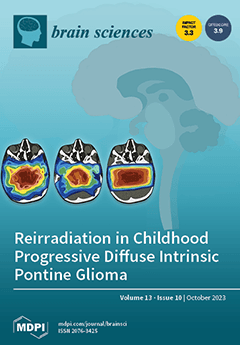Open AccessArticle
The Impact of Chronic Stress on Behavior and Body Mass in New Animal Models
by
Anisia Iuliana Alexa, Carmen Lăcrămioara Zamfir, Camelia Margareta Bogdănici, Andra Oancea, Alexandra Maștaleru, Irina Mihaela Abdulan, Daniel Constantin Brănișteanu, Alin Ciobîcă, Miruna Balmuș, Teodora Stratulat-Alexa, Roxana Elena Ciuntu, Florentina Severin, Mădălina Mocanu and Maria Magdalena Leon
Cited by 3 | Viewed by 3880
Abstract
(1) Background: Exposure to different sources of stress can have a significant effect on both psychological and physical processes. (2) Methods: The study took place over a period of 34 days and included a total of 40 animals. Regarding the exposure to chronic
[...] Read more.
(1) Background: Exposure to different sources of stress can have a significant effect on both psychological and physical processes. (2) Methods: The study took place over a period of 34 days and included a total of 40 animals. Regarding the exposure to chronic stressors, we opted for physiological, non-invasive stressors, e.g., running, swimming, and changes in the intensity of light. An unforeseen stress batch was also created that alternated all these stress factors. The animals were divided into five experimental groups, each consisting of eight individuals. In the context of conducting the open field test for behavioral assessment before and after stress exposure, we aimed to investigate the impact of stress exposure on the affective traits of the animals. We also monitored body mass every two days. (3) Results: The control group exhibited an average increase in weight of approximately 30%. The groups exposed to stress factors showed slower growth rates, the lowest being the running group, recording a rate of 20.55%, and the unpredictable stress group at 24.02%. The anxious behavior intensified in the group with unforeseen stress, in the one with light variations, and in the running group. (4) Conclusions: Our research validates the animal model of intermittent light exposure during the dark phase as a novel method of inducing stress. The modification of some anxiety parameters was observed; they vary according to the type of stress. Body mass was found to increase in all groups, especially in the sedentary groups, likely due to the absence of cognitive, spatial, and social stimuli except for cohabitation.
Full article
►▼
Show Figures






